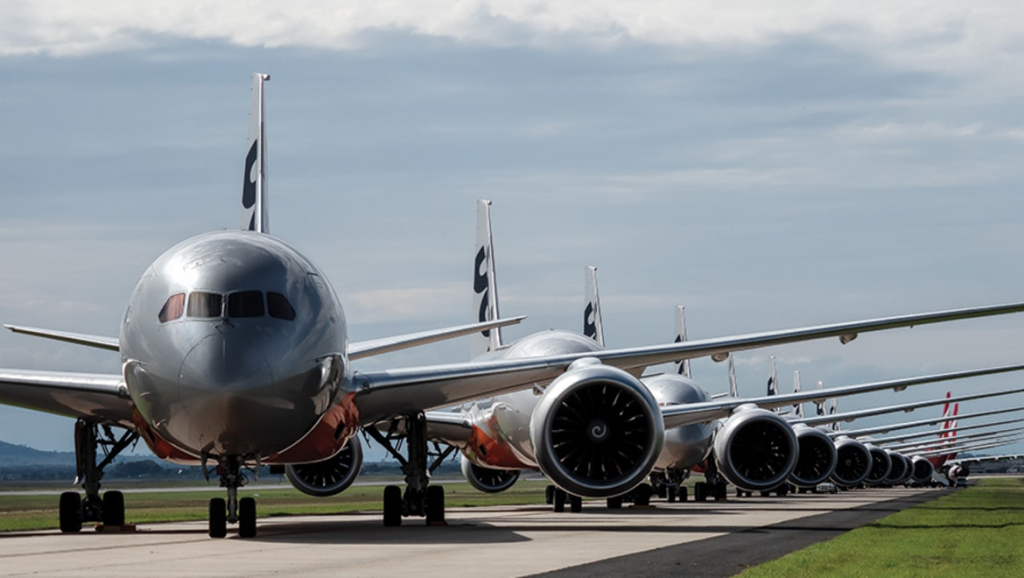
Australian Airports Association chief executive James Goodwin talks through the most challenging year in the organisation’s history.
2020 was a year no one working in airports will ever forget. Beginning with bushfires followed by the coronavirus, which led to the disappearance of passengers, job losses and record levels of debt which will take years to recover.
Just as all domestic borders were finally open and passenger numbers were ramping up going into the festive season, the virus has reared its ugly head again, throwing thousands of Christmas travel plans into disarray and putting the brakes on the sector’s flightpath to recovery.
In January, Australians were already experiencing the most devastating bushfire crisis in living memory.
Dozens of regional airports and aerodromes were transformed into aviation firefighting bases – tarmacs playing home to hundreds of firefighting aircraft, crucial in protecting homes and property trapped in the line of the fire.
At many RPT airports, the thick, choking smoke made it too dangerous for aircraft to land, creating chaos across the flight network and prompting holiday-makers to reconsider their travel plans.
But as the fires smouldered out, COVID-19 crept in through international passengers arriving at our overseas terminals.
Our nation was swiftly put into lockdown with all residents who weren’t considered essential workers, instructed to stay inside their homes.
The pandemic hit airports like a landslide, moving slowly at first – in February, passenger numbers were only 6 per cent lower than in 2019. During March, the closing of international borders and the first national lockdown saw the ground shifting, with a 41 per cent drop in passengers. By April, most Australian airport terminals resembled ghost towns with passenger numbers down 97 per cent compared to April 2019.
It became clear very quickly that airports were in this for the long haul – it would get worse before it got better and recovery would be a hard slog for several years.
But most airports remained open, providing a critical service moving freight and medical supplies in, out and around the country, flying essential workers including nurses, doctors and the military to where they were needed and helping the government bring thousands of Australians home from overseas.
In June, airports, along with their airline partners, developed the Domestic Passenger Journey Protocol to provide a clear and consistent guide for workers and passengers to follow at domestic airports and on aircraft to minimise the spread of COVID-19.
The Protocol was approved by the Australian Health Protection Principal Committee (AHPPC) and endorsed by the national cabinet.
But keeping the lights on and runways operating came at a significant cost. Lost revenue has reached $3.5 billion, and during the peak of the crisis, airports were collectively losing more than $320 million a month.
Despite there being limited passengers, the fixed costs of operating an airport remained the same with the sector receiving just 11 cents in every dollar of the government’s aviation support program.
The numbers were so dire on the Gold Coast that the airport had no choice but to shut down. It was closed for a total of 45 days. Who, at the beginning of the year, could have ever imagined Australia’s sixth busiest airport would be completely closed for six weeks?
Our regional airports were also knocked for six with more than 70 per cent of staff made redundant, forced to take leave or put on reduced hours. To make matters worse, most regional airports didn’t qualify for JobKeeper because they’re largely owned and operated by local councils.
Our airports had to quickly adapt to the evolving situation, supporting health authorities in facilitating temperature testing and contact tracing though domestic arrival gates and developing new travel lanes for international passengers.
For example, Sydney Airport had to split its international terminal into three separate areas to accommodate three categories of arrivals. Red for passengers returning from overseas who had to go straight into hotel quarantine, purple for travellers arriving from Melbourne during the lockdown who also needed to quarantine in a hotel and green for passengers arriving from New Zealand who were allowed into the country without having to isolate.
Developing these new travel channels was a challenge, but it’s what airports were willing to do to ensure Australia’s aviation network could continue when the nation and the government was relying on it most.
Not only were airports dealing with the biggest disruption to air travel since the Second World War, but they were also moving into the largest regulatory change in a decade – the updated MOS Part 139.
This important piece of work was four years in the making and reflected changes in technology and operations to ensure Australia is more aligned with the International Civil Aviation Organization (ICAO) standards.
There were also new aviation security regulations which came into force in December. Flyers will start to notice new, high-tech screening equipment and procedures in place making the airport even safer and more secure.
If there was a silver lining to the pandemic, it gave airports an opportunity to plan and complete a range of critical on-airport projects with more than $1 billion worth of infrastructure and equipment upgrades achieved this year.
New runways were completed at Brisbane and Sunshine Coast airports, the runway was extended at Gold Coast Airport and resurfaced in Sydney and Perth’s second runway was approved.
Sixty-one regional airports shared in more than $41.2 million for projects funded under the first round of the Australian Government’s Regional Airports Program with applications currently being assessed for Round 2.
Due to strong advocacy by the AAA, the government has changed the program guidelines so that local government and Indigenous corporations with projects of $300,000 or less will be fully-funded rather than the airport having to find the remaining 50 per cent.
Looking forward to next year, the AAA’s major focus will be to ensure domestic air travel continues to prosper. Before the outbreak on Sydney’s Northern Beaches, almost 90 per cent of Australians were willing to travel interstate. Of those, 97 per cent were eager to cross the border via aircraft.
I have no doubts moving into 2021, the desire for travel will continue to grow and demand for international travel bubbles will surge bringing hundreds of airport jobs back online.
Australia’s international airports look forward to facilitating overseas travel with other COVIDSafe nations, in particular New Zealand, which we expect to have a two-way, quarantine-free agreement with early next year.
The AAA will continue to work with government on ensuring Australia’s aviation workers will be made a priority under the nation’s vaccination program due to roll out in March. Airport staff are frontline workers and potentially have a higher risk of coming into contact with the virus, which was demonstrated in Sydney this month with a van driver contracting the disease.
In the week leading up to the holidays, the aviation industry seemed to have been granted its Christmas wish, with all domestic borders open and passenger numbers the highest they’ve been since the pandemic hit in March.
But the Northern Beaches cluster has highlighted just how quickly things can change and that recovery will be long and slow with bouts of turbulence knocking us about in the process.
While so much uncertainty remains, our sector is moving forward and not looking back. The pandemic has certainly transformed the way we operate with passengers continuing to see new physical changes in place now and into next year including increased cleaning, Perspex barriers at counters and check-in desks, ample COVID-19 messaging and increased face mask use.
What won’t change is that airports will continue to provide essential services to connect Australians across the country and to the world.
Having hit rock bottom this year, the only way is up for Australia’s airports in 2021.
 James Goodwin is the chief executive of the Australian Airports Association
James Goodwin is the chief executive of the Australian Airports Association
















James
says:Let’s hope already astronomically charged Airport fees to Airlines using them, aren’t increased.
Nathaniel
says:Maybe the airport powers-that-be might like to look at the costs involved, especially in this age of environmental concern, in the ridiculous, & wasteful use of water in ‘water cannon salutes’ over aircraft.
It’s not necessary in any way whatsoever. It’s a practice which should be stopped immediately.
Famina
says:Boeing on February 21 said that all 128 of its 777 aircraft powered by a particular Pratt and Whitney engine model should be grounded globally until the Federal Aviation Administration determines the best way to inspect the engines. The aerospace giant issued its recommendation a day after a 777 operated by United Airlines suffered a dramatic engine failure over Colorado.
https://bangladeshmonitor.com.bd/news-details/boeing-urges-global-grounding-of-777s-after-united-suffers-engine-failure